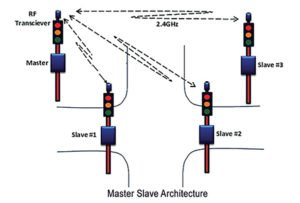Sonal Ahuja
Features of PTV BALANCE
 • PTV Balance is the ideal software tool for traffic-adaptive network control.
• PTV Balance is the ideal software tool for traffic-adaptive network control.
• Unlike a fixed time control system which always runs its program in the same way regardless of the actual traffic situation, traffic-adaptive control reacts to what’s happening on the roads and can efficiently utilize the capacity of the nodes.
• As a model-based control system, PTV Balance goes one step further by automatically designing a range of control options that can be evaluated using a model, before being applied in the field. That means the best control option always gets a green light – even over multiple nodes.
• The internal traffic model is evaluated via a custom performance index. This performance index represents the weighted sum of all stops, waiting periods and blocking backs. The traffic engineer can adjust the weighting for each signal group.
• PTV Balance controls the entire network and you’ll get the green light for every road, without having to invest in expensive detectors additionally.
• PTV Balance transmits the optimal framework signal plan to the local control devices, where they are either applied directly or refined locally using a tactical optimization tool, such as PTV Epics. PTV Balance repeats the full optimization process every five minutes.
Many Indian cities suffer under a traffic that is continuously increasing, creating long delays and traffic jams in the road network. But the government is reacting to this and promoting the idea of intelligent traffic control with their smart cities initiative. So, ATCSs have gained much significance nowadays. But the task is still about increasing acceptance of the systems by the local authorities.
Some of the challenges in integrating with other intelligent traffic systems are calibration of the existing system; limitations while testing the system in the real-time network; inability of the existing systems to receive signals and perform based on it after integrating the products; and public and political acceptance.
We are looking forward to expand our market and business in the coming years. More studies to be carried across India to optimize technical efficiency of a project. Primary goal is to transform Indian cities to smart cities.
 Vinod Puranik,
Vinod Puranik,
Director,
Envoys Electronics Pvt Ltd
ATCS for road traffic management has been in place in many major cities of western world for many decades. In India the first such implementation was done in Delhi, way back in 2000. Between 2000 to 2014, very few cities in India went for citywide Traffic Management with ATCS. In spite of acknowledging the advantages of ATCS, such as increase in travel speed, reduction in delays-journey time & increase in traffic volume etc, most of the cities in India continued to work with conventional fixed Time traffic control system.
One of the major reasons for not adopting ATCS has been lack of funds and lack of citywide communication infrastructure, which forms the backbone of ATCS. Secondly whatever ATCS implementation attempts were carried out during 2000 to 2014, the technologies chosen (mostly European based on queue length and lane discipline) were not suitable for Indian traffic conditions/ environment and hence did not yield any tangential benefit to city administrators and road users. Multiple control rooms with no co-ordination between police and civic agencies is another reason for ineffectiveness of traffic management in Indian cities.
Going by the experience and outcome of various ATCS implementation in India in the last 15 years, as a technology partner, Envoys opted for an indigenous solution under Transfer of Technology (ToT) programme of Department of Electronics and Information Technology (DeitY) of Government of India. Our ATCS solution, comprises of patented Wireless Traffic Controller WiTraC with distributed architecture in Master-Slave configuration at Junction side and Composite Signal Control Strategy(CoSiCoSt) based ATCS application at the Central Command and Control Center. As the Controller is wireless, it eliminates all site activities associated with conventional Traffic Controller such as road-cutting, refilling, cable laying and cable faults during operations period. WiTraC is primarily designed for solar operations; however it can be converted to work with 230VAC mains operation.
 TrafficInfraTech Magazine Linking People Places & Progress
TrafficInfraTech Magazine Linking People Places & Progress